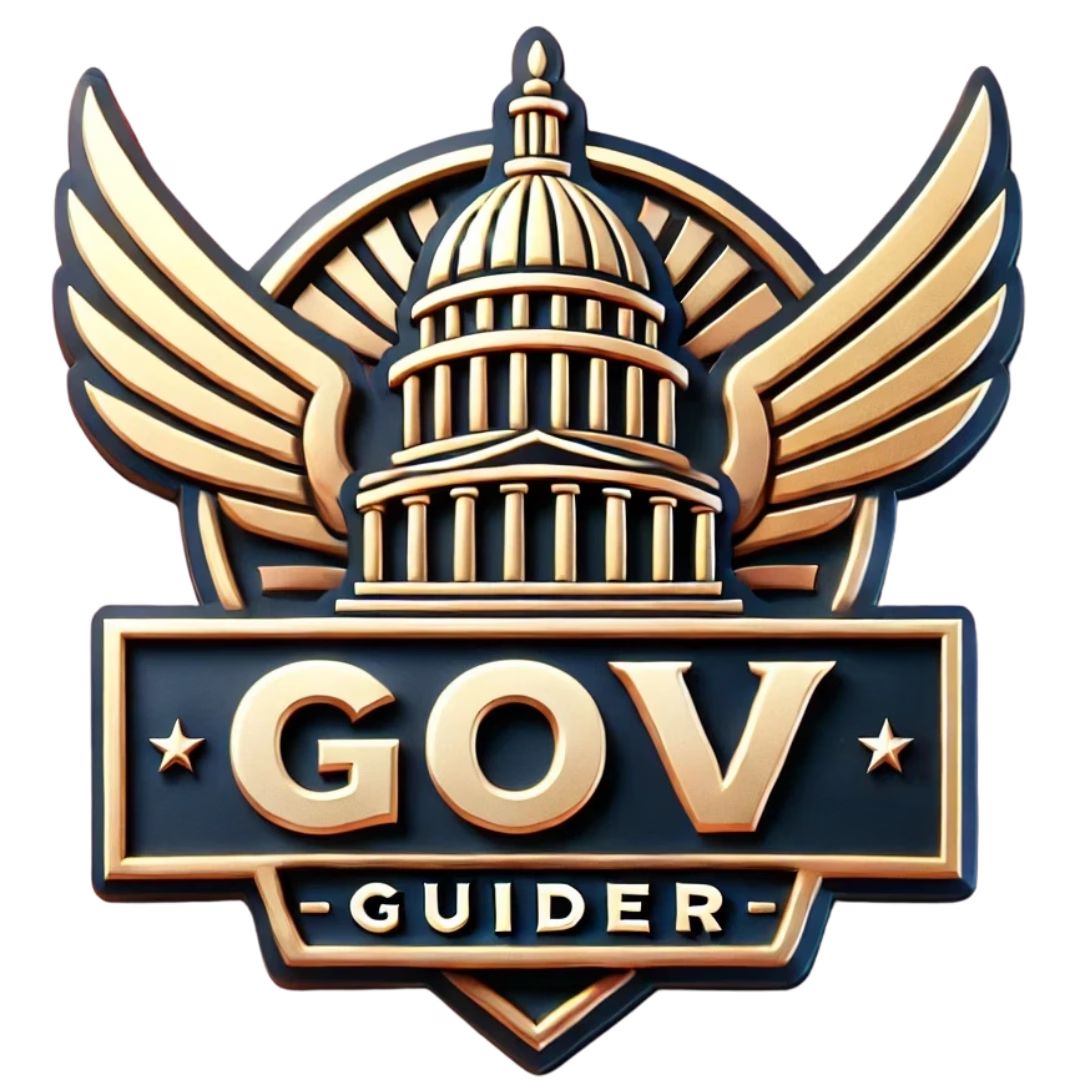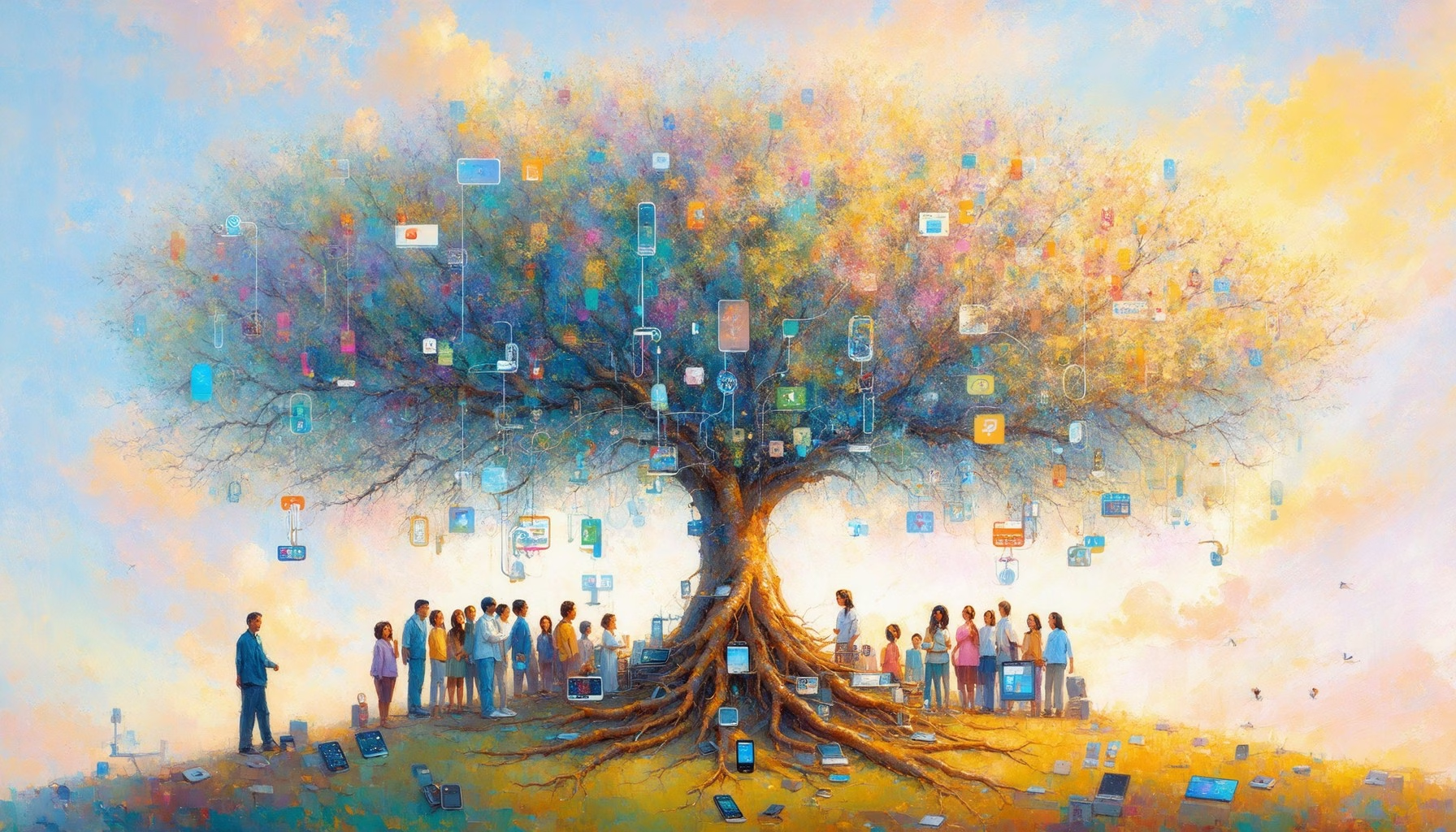Key Takeaways
- Eligibility for the Federal Lifeline Program includes low-income households meeting income criteria or participating in federal assistance programs like SNAP and Medicaid.
- Eligible participants can receive monthly discounts of up to $9.25 on phone services, with higher discounts of $34.25 for those on Tribal lands.
- The Lifeline Assistance Program not only reduces phone bills but also enhances access to essential services like healthcare and education.
- Understanding the differences between the Lifeline and Affordable Connectivity Program (ACP) can help you maximize benefits for phone and internet services.
- The application process for the Lifeline program is straightforward, requiring proof of eligibility and documentation to secure affordable communication services.
Welcome to our Comprehensive Guide to the Federal Lifeline Program, where we delve into the essential details surrounding this vital initiative designed to provide affordable communication services to low-income households. In this article, we will explore who is eligible for the federal Lifeline program, the benefits you can receive, and how to navigate the Lifeline application process. We will also clarify the differences between the Lifeline program and the Lifeline ACP program, ensuring you understand the unique features of each. Additionally, we will provide insights into the costs associated with Lifeline phone services and offer practical tips on managing your phone bill effectively. Whether you’re looking to apply for Lifeline or simply want to learn more about the lifeline assistance program, this guide is your go-to resource for understanding how the lifeline phone program can enhance your connectivity and support your communication needs.
Who is eligible for the federal Lifeline program?
Overview of Lifeline Program Eligibility Requirements
The Lifeline program is designed to provide affordable communication services to low-income individuals and families. To qualify for Lifeline assistance, applicants must meet one of the following criteria:
- Income-Based Eligibility:
- Household income must be at or below 135% of the Federal Poverty Guidelines. For example, in 2023, this means a household of four must have an income of $38,625 or less.
- Program-Based Eligibility:
- Participation in certain federal assistance programs qualifies individuals for Lifeline. These programs include:
- Supplemental Nutrition Assistance Program (SNAP)
- Medicaid
- Federal Public Housing Assistance (FPHA)
- Supplemental Security Income (SSI)
- Veterans Pension and Survivors Benefit
- Tribal programs such as Bureau of Indian Affairs General Assistance or Tribal Head Start.
- Participation in certain federal assistance programs qualifies individuals for Lifeline. These programs include:
- State-Specific Programs:
- Some states offer additional programs that may qualify individuals for Lifeline. It is advisable to check local regulations and programs that may provide further assistance.
For more detailed information on eligibility requirements and to apply, individuals can visit the official Lifeline program website or consult resources like Gov Guider, which provides guidance on government assistance programs.
Special Considerations for Low-Income Households
Low-income households face unique challenges that the Lifeline program aims to address. The Lifeline assistance program not only provides discounted lifeline phone services but also ensures that families can stay connected during critical times. Here are some special considerations:
- Access to Essential Services: Many low-income families rely on Lifeline phone service to access healthcare, education, and employment opportunities. Maintaining communication is vital for these households.
- Multiple Benefits: Eligible households can receive both a discount on phone service and, in some cases, a free phone through the Lifeline assistance program free phone options.
- Awareness of Local Resources: It is important for low-income households to be aware of local programs that may complement Lifeline benefits, such as additional state-specific assistance programs.
By understanding these special considerations, low-income households can better navigate their options and maximize the benefits of the Lifeline program. For further insights, explore government assistance for low-income families.

How much do you get for Lifeline?
The Lifeline program is a federal initiative designed to provide discounted phone services to eligible low-income individuals and families. If you qualify for the Lifeline program, you can receive a minimum discount of $9.25 per month on your wireless bill. For those residing on federally-recognized Tribal lands, the discounts can be even more substantial, potentially reaching up to $34.25 per month. This additional support is aimed at bridging the digital divide and ensuring that all Americans have access to essential communication services.
Understanding the Federal Lifeline Benefit Program Amounts
Under the Lifeline assistance program, the amount you receive can vary based on your location and eligibility. The standard discount of $9.25 applies to most participants, while those on Tribal lands may benefit from the higher discount of $34.25. This financial assistance is crucial for low-income households, allowing them to maintain essential communication services without incurring prohibitive costs.
To qualify for the Lifeline program, applicants must meet specific income criteria or participate in certain federal assistance programs, such as Medicaid, Supplemental Nutrition Assistance Program (SNAP), or Federal Public Housing Assistance. For more detailed information about eligibility requirements and to explore the services supported by Lifeline, you can visit the Federal Communications Commission (FCC) website or contact your wireless provider directly. Additionally, resources like Gov Guider can assist you in navigating the application process and understanding your benefits under the Lifeline program.
Additional Benefits of the Lifeline Assistance Program
Participating in the Lifeline phone program not only reduces your monthly phone bill but also opens the door to additional benefits. Many providers offer bundled services that include discounts on internet access, which is increasingly vital in today’s digital world. This can help families stay connected for educational, employment, and healthcare needs.
Moreover, the Lifeline program can enhance your access to emergency services and vital communication tools, ensuring that you remain connected with family, friends, and essential services. By applying for Lifeline, you not only save on your monthly phone bill but also gain access to vital communication services that can enhance your quality of life. For more insights on government assistance phone options, check out this resource.
What’s the difference between the ACP program and Lifeline?
The Lifeline program and the Affordable Connectivity Program (ACP) serve distinct purposes in supporting low-income households with communication services. Understanding the differences between these two programs can help you determine which assistance is most beneficial for your needs.
Comparing the Lifeline Program and the Lifeline ACP Program
The Lifeline program, established by the Federal Communications Commission (FCC), provides a monthly discount on phone and internet services to eligible low-income consumers. This program aims to ensure that all Americans have access to essential communication services, which is vital for employment, education, and emergency situations. Eligible participants can receive a discount of up to $9.25 per month, or up to $34.25 for those on Tribal lands.
On the other hand, the Affordable Connectivity Program (ACP), launched in 2021, builds on the Lifeline initiative by providing additional financial support specifically for broadband internet access. The ACP offers a monthly discount of up to $30 for eligible households and up to $75 for those on Tribal lands. This program is particularly focused on bridging the digital divide, ensuring that low-income households can participate in the digital economy and access online educational resources.
Key Features of the Lifeline Phone Program vs. ACP
- Focus: The Lifeline program primarily targets basic phone and internet service discounts, while the ACP emphasizes broadband affordability.
- Discount Amounts: Lifeline offers up to $9.25 monthly for phone services, whereas the ACP provides up to $30 for broadband access.
- Eligibility: Both programs require participants to meet specific income criteria, but the ACP is particularly aimed at enhancing internet access.
- Duration: The Lifeline program is a permanent initiative, while the ACP is currently a temporary program designed to address immediate connectivity needs.
In summary, while both programs aim to enhance communication access for low-income individuals, Lifeline focuses on basic phone and internet service discounts, whereas the ACP specifically targets broadband affordability to promote digital inclusion. For more detailed information, you can visit the FCC’s official website or consult resources like the National Digital Inclusion Alliance.
What is the Kansas Lifeline program?
The Kansas Lifeline program is a federal and state initiative designed to provide discounted phone services to eligible low-income residents in Kansas. This program aims to ensure that all individuals have access to essential communication services, which are vital for employment, education, and emergency situations.
Specifics of the Kansas Lifeline Program
The Kansas Lifeline program offers several key features that make it an essential resource for low-income households:
- Eligibility Requirements: To qualify for the Kansas Lifeline program, applicants must meet specific criteria, which typically include:
- Participation in government assistance programs such as Medicaid, Supplemental Nutrition Assistance Program (SNAP), or Federal Public Housing Assistance.
- A household income that is at or below 135% of the Federal Poverty Guidelines.
- Benefits Offered: Eligible participants can receive significant discounts on their monthly phone bills, which may include:
- A free cell phone with a limited number of minutes and texts.
- Reduced rates on landline or mobile services, depending on the provider.
- Application Process: Interested individuals can apply for the Kansas Lifeline program through approved service providers. The application process generally involves:
- Providing proof of eligibility, such as income documentation or proof of participation in qualifying programs.
- Completing an application form, which can often be done online or via mail.
- Participating Providers: Several telecommunications companies in Kansas participate in the Lifeline program, offering various plans and services. It’s essential for applicants to compare options to find the best fit for their needs.
- Additional Resources: For more information about the Kansas Lifeline program, residents can visit the Kansas Corporation Commission’s website or contact local service providers. The Gov Guider platform may also provide guidance on eligibility and application assistance.
Eligibility and Benefits for Kansas Residents
By ensuring access to affordable communication services, the Kansas Lifeline program plays a crucial role in bridging the digital divide for low-income residents, enhancing their ability to connect with essential services and opportunities. Eligible participants can significantly reduce their communication costs, making it easier to stay connected with family, job opportunities, and critical services.
For further details, you can refer to the Federal Communications Commission (FCC) guidelines on the Lifeline program and the Kansas Corporation Commission’s resources. Additionally, exploring the Maximizing benefits of the Lifeline Assistance Program can provide further insights into how to make the most of these services.

How much does Lifeline cost?
The federal Lifeline program is designed to provide affordable communication services to low-income individuals. Understanding the costs associated with Lifeline phone service is crucial for potential beneficiaries. Below, we break down the costs related to Lifeline phone services and internet options.
Breakdown of Costs Associated with Lifeline Phone Services
The Lifeline assistance program offers significant savings on phone services, but there are still some costs involved. Typically, the Lifeline program provides a discount on monthly service fees, which can vary based on the provider and the specific plan chosen. Here’s a general overview:
- Monthly Discount: Eligible participants can receive a discount of up to $9.25 per month on their phone bill. For those living on Tribal lands, the discount can be as high as $34.25.
- Activation Fees: Some providers may charge a one-time activation fee, which can range from $0 to $50, depending on the service plan.
- Lifeline Phone Program Options: Users can select from various plans, including basic voice services or bundled packages that may include text and data services.
For more detailed information on maximizing benefits from the Lifeline assistance program, you can visit Maximizing benefits of the Lifeline Assistance Program.
Understanding Lifeline Program Internet Costs
In addition to phone services, the Lifeline program also extends to internet services, providing essential connectivity for low-income households. Here’s what you need to know about the costs:
- Internet Discounts: Similar to phone services, eligible participants can receive a discount of up to $9.25 per month on internet service. This can help make essential online resources more accessible.
- Provider Variability: Costs can vary significantly based on the internet service provider and the plan selected. Some providers may offer additional discounts or promotional rates for Lifeline participants.
- Lifeline ACP Program: The Lifeline ACP program may offer further benefits, including additional discounts for broadband services, enhancing affordability for users.
For those interested in exploring government assistance phone options, including Lifeline internet services, check out Government assistance phone options.
How can I pay my phone bill with no money?
If you find yourself unable to pay your phone bill, there are several options to consider that can help you maintain your service without immediate funds. Here are some practical steps:
- Reach Out to Family or Friends: Often, family or friends may be willing to lend you the money to cover your bill. Be honest about your situation and explain why you need assistance.
- Contact Your Service Provider: Many phone companies offer payment plans or temporary relief options for customers facing financial hardship. Contact Lifeline customer service to discuss your situation; they may provide extensions or reduced payment plans.
- Explore Government Assistance Programs: Programs like the Lifeline Assistance program can help low-income individuals afford phone services. This program provides discounts on monthly phone bills and can be a valuable resource. Check your eligibility through the official government website.
- Consider Community Resources: Local charities and non-profit organizations often provide financial assistance for utility bills, including phone services. Research organizations in your area that may offer help.
- Look into Short-Term Loans: If you have no other options, a payday loan might be a quick solution. However, be cautious as these loans often come with high-interest rates and can lead to further financial strain. Always read the terms carefully before proceeding.
- Utilize Mobile Payment Apps: Some apps allow you to earn cash back or rewards that can be used to pay bills. Consider using apps that offer financial incentives for shopping or completing tasks.
- Negotiate with Your Provider: If you have been a loyal customer, leverage that relationship. Ask if they can offer any discounts or promotions that could lower your bill temporarily.
By exploring these options, you can find a way to manage your phone bill even when funds are tight. Always prioritize communication with your service provider and seek assistance from community resources to avoid service interruption.
Resources for Lifeline Customer Service Assistance
If you need further assistance regarding your Lifeline phone service, it’s essential to know where to turn for help. Here are some valuable resources:
- Universal Service Administrative Company: This organization oversees the Lifeline program and can provide information on eligibility and benefits.
- Consumer Financial Protection Bureau (CFPB): A resource for general consumer assistance and financial education.
- Maximizing benefits of the Lifeline Assistance Program: A guide to understanding how to make the most of your Lifeline benefits.
- Government assistance phone options: Explore various programs available to assist with phone services.
How to apply for Lifeline?
Applying for the lifeline program is a straightforward process designed to help eligible individuals access affordable phone services. Here’s a step-by-step guide to navigate the lifeline application process effectively.
Step-by-Step Guide to the Lifeline Application Process
- Check Your Eligibility: Before applying, ensure you meet the eligibility requirements for the lifeline assistance program. Typically, you must participate in a qualifying government assistance program or meet specific income criteria.
- Gather Required Documents: Collect necessary documentation, such as proof of income or participation in a qualifying program. This may include pay stubs, tax returns, or benefit letters.
- Choose a Provider: Select a lifeline phone service provider in your area. You can find a list of participating providers on the Universal Service Administrative Company (USAC) website.
- Complete the Application: Fill out the application form, which can often be completed online through your chosen provider’s website or by mail. Ensure all information is accurate to avoid delays.
- Submit Your Application: Send your completed application along with any required documents to your selected provider. Keep a copy for your records.
- Follow Up: After submission, contact your provider’s lifeline customer service to confirm receipt of your application and inquire about the status.
Accessing the Lifeline Program Application Form Online
You can access the lifeline program application form online through your chosen provider’s website. Many providers offer a user-friendly interface to help you complete the application process efficiently. Additionally, the FCC Lifeline Program page provides resources and links to various providers, ensuring you can find the right application form for your needs.
For more detailed insights on maximizing benefits from the lifeline assistance program, consider visiting Maximizing benefits of the Lifeline Assistance Program.




